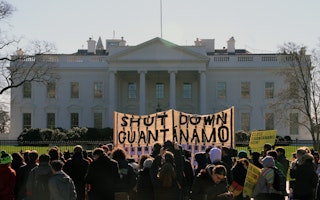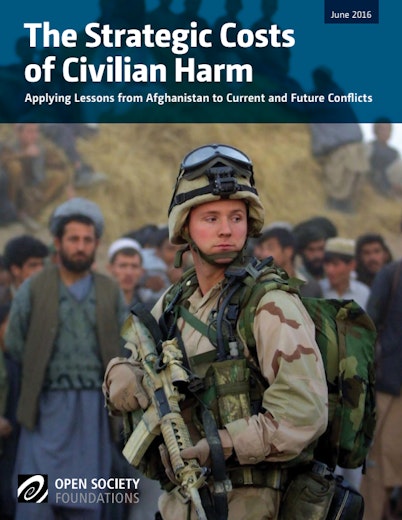During the early years of the United States’ involvement in Afghanistan, the U.S. military was killing too many civilians and depriving too many others of basic rights and liberties. By 2008, nearly 40 percent of civilian deaths in Afghanistan resulted from U.S. military operations.
The level of “civilian harm”—the military’s term for killing innocent civilians and causing major political, social, and economic disruption—was adversely impacting the United States’ efforts to defeat the Taliban and weakening the legitimacy of the U.S. and Afghan governments.
The report, The Strategic Costs of Civilian Harm: Applying Lessons from Afghanistan to Current and Future Conflicts, examines how the U.S. military learned from its early mistakes in Afghanistan and applied lessons to mitigate civilian harm. In fact, starting in 2009, the U.S. military recognized its mistakes and started to understand the high strategic cost of civilian harm. The military’s changes led to a significant reduction in civilian deaths during the next few years.
The report argues that the United States should develop a Uniform Policy on Civilian Protection. The new standards would apply to all U.S. military operations in current and future conflicts and, hopefully, better protect civilians caught in conflict.
Download
-
The Strategic Costs of Civilian Harm (1.03 Mb pdf file)
Download the complete 78-page report. (Updated: June 22, 2016)
Read more
Voices
The Enduring Toll of Civilian Harm
The United States discovered the true costs that civilian casualties had on its efforts in Afghanistan. It shouldn’t have to learn those lessons again.
National Security and Human Rights
Rebuilding and Resilience: 20 Years Since 9/11

On the 20th anniversary of the 9/11 attacks, Open Society shares reflections from partners on the road traveled since—and the hard work still ahead.
19 Shameful Years
Torture’s Terrible Toll

The horror stories emanating from Guantanamo Bay shock the conscience. It is long past time to close the prison.
